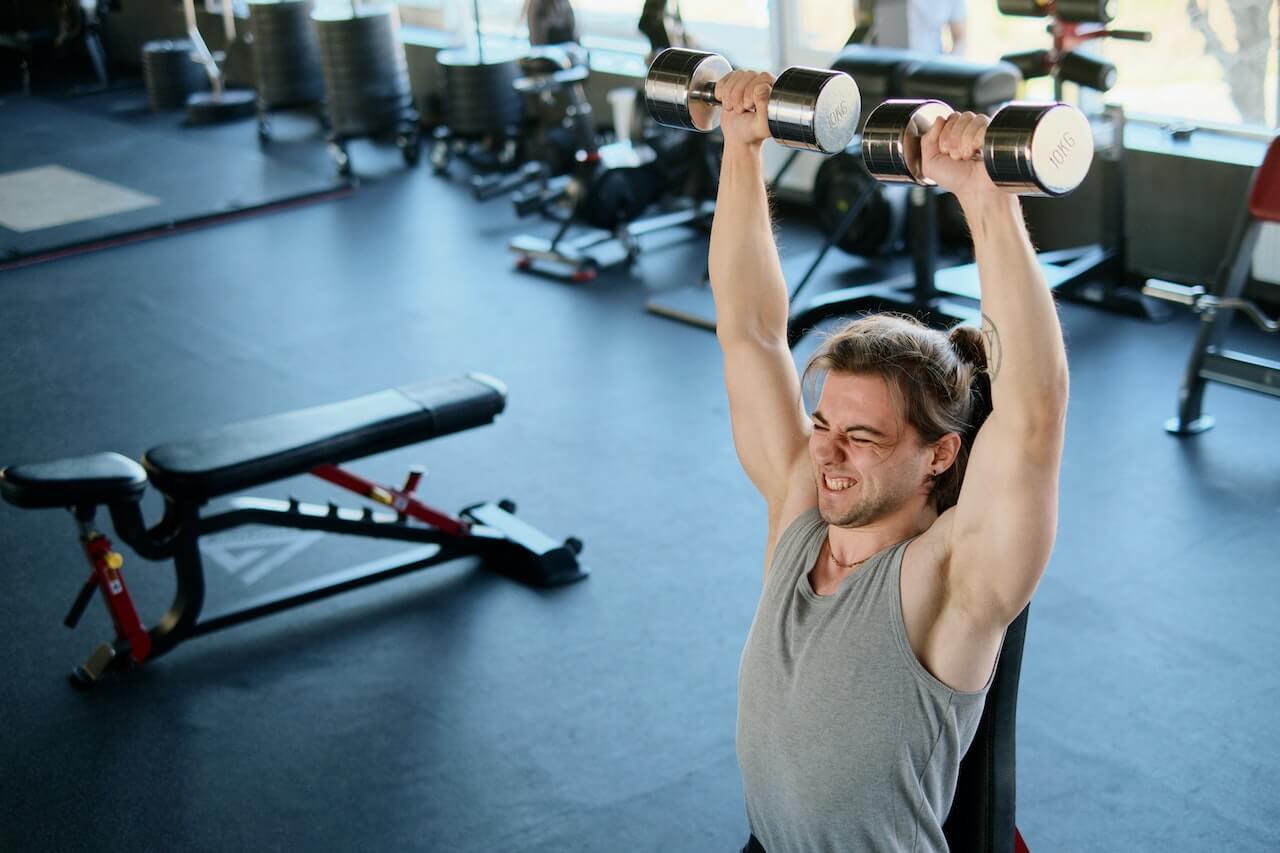People have numerous fitness regimens to improve their physical health. Some run a 5K, while others swim laps in the pool. You may be a gym rat who constantly sets new personal records on the deadlift. However, knowing which exercise path to take may be confusing if you’re new. Should you do cardio or weights for weight loss? This article explores the benefits of both, so you can make an informed decision about which best fits your exercise style.
Cardio vs. Weight Training: What’s the Difference?
There are many ways to exercise, but cardio and strength training are two of the most prominent. Each provides benefits, but there are considerable differences between the two.
Cardio includes aerobic exercises like walking, running, swimming, and cycling. The objective of cardio is to increase your heart rate and blood flow. Pairing cardio with a balanced diet can also help you lose weight.
Strength training is another option for exercise. As the name suggests, it aims to build muscle and improve strength. Some people lift weights to lose pounds, while others intend to gain weight through strength training and a high-calorie diet.
{{mid-cta}}
Key Benefits of Cardio
Cardio is an excellent choice for those wanting to start to exercise. You’ll improve your quality of life by walking, swimming, or dancing, plus enjoy the below eight benefits.
1. Improves Heart Health
The top benefit of cardio is improving your heart health. Aerobic exercise does wonders for your cardiovascular system, whether you’re cycling, fast walking, or doing burpees. Cardio, also helps increase your blood circulation. Regular workouts can lower blood pressure and reduce the risk of heart disease and chronic diseases.
2. Burns More Calories
Cardio requires energy. You’ll likely feel worn out after a long walk or running a mile due to increased energy expenditure. Aerobic regimens take your body’s stored energy and use it to power your exercises, which in turn, burns calories. Cardio is ideal for those whose fitness goals include burning many calories in a short amount of time.
3. Regulates Your Appetite
A significant portion of a fitness journey is your daily diet. Research shows aerobics affects glucagon production, which breaks down glucose in your liver. Exercise increases glucagon production and can decrease appetite.
4. Helps You Lose Weight Faster
Many people choose aerobic exercises because cardio is known to speed up weight loss. Losing weight requires being in a caloric deficit (using more calories than you ingest), and one of the best ways to achieve this is through cardio. You can do low-intensity regimens like walking or high-intensity activities like running. Either way, aerobic exercises help you lose weight fast with a balanced diet.
5. Maintains Healthy Blood Pressure Levels
Cardio strengthens your heart and cardiovascular system. Regular exercise makes your heart pump blood easier and improves your workout performance. A strong heart also puts less pressure on your arteries and reduces your blood pressure.
6. Boosts Your Immune System
Regular cardio strengthens your lungs and boosts your immune system by decreasing inflammation. The more exercise you do, the better your body can respond to a virus, which can be extremely helpful during cold and flu season.
7. Promotes Brain Health
One of cardio’s most critical benefits revolves around how this form of exercise affects your brain. Regular aerobics helps blood flow throughout your body, especially to your brain. The increased blood flow reduces your chances of chronic diseases like vascular dementia. It can also guard your brain against inflammation and neurogenesis.
8. It’s Fun and Easy to Vary
The wonderful thing about cardio is that it’s easy for you to do and there are hundreds of variations to choose from. You can lace up your shoes and walk around your neighborhood or dance it out to your favorite music in your living room. There’s hardly a limit to aerobic exercises. You're getting an effective workout as long as you move your body. You can also increase the difficulty of any aerobic exercise if you feel up for a challenge.
Key Benefits of Weight Training
In the cardio vs. weights debate, you may decide to try out weight (or strength) training. Strength training is a terrific way to exercise and focus on strength goals. You can pick from hundreds of exercises and enjoy the below benefits.
1. Increases Metabolism
Some people might wonder if lifting weights burns fat. The answer is yes, but it’s slightly more complicated. Strength training boosts your metabolism as you begin to build muscle. Lean muscle tissue is more metabolically active than fat, so the more muscle mass you have, the more energy (calories) is required to function, even on a rest day. As you progress through strength training and build muscle, you will lose fat and naturally increase your metabolism.
2. It’s Great for Building Muscle
Many people participate in strength training because they want to build muscle. Lifting weights creates tears in your muscles, which repair themselves and get stronger. A consistent strength training regimen builds your muscles over time.
3. Helps Burn Calories Throughout the Day
Some fitness beginners wonder how many calories weightlifting burns. A 30-minute strength training session won’t burn as many calories as a 30-minute cardio workout, but lifting burns more calories than cardio when you’re at rest. This is due to excess post-exercise oxygen consumption (EPOC) and internal chemical processes that attempt to return your body to a pre-exercise state by burning excess calories to restock the body’s fuel stores and repair muscle tissue.
4. Increases Your Strength
Weightlifting regimens make you stronger, and you’ll find everyday lifting activities easier over time. Strength training also improves your arms’ and legs’ range of motion and overall flexibility.

5. Prevents Injuries
An underrated benefit of strength training is its ability to prevent injuries. Your body becomes stronger, and your stronger muscles can hold your body in proper alignment while also protecting your bones and joints when under impact. This can be critical in fall prevention for older adults.
6. Increases Bone Health
Lifting weights does put pressure on your bones and muscles. Luckily, your training boosts your bone health by naturally increasing bone density. Weight lifting, when paired with a balanced diet, can deter chronic diseases like osteoporosis.
7. Helps With Stress
The physical benefits of strength training go far, but there are also mental health benefits. First, strength training helps with stress. Lifting weights helps your body produce endorphins, which make you feel better. It takes your mind off the day’s stress and lets you focus on the most critical tasks.
8. Aids Sleep
Regular strength training helps you sleep better at night. A recent study found that resistance exercise is just as effective, if not more impactful, than cardio at helping you sleep at night.
Should I Do Cardio and Weights at the Same Time?
Many people choose one side in the cardio vs. weights debate, but who says you have to choose? You can incorporate cardio and strength training into your workout regimen, separately or simultaneously.
1. Fat Loss and Muscle Gain
Combining the two workout types can accomplish two fitness goals simultaneously. If you aim to lose weight, you can focus on a cardio weightlifting workout, such as HITT-style programming. This type of workout will allow you to reap the benefits of cardio while still strengthening muscle mass.
2. Better Mental Health
Both exercise styles help your mental health by relieving stress. A University of South Queensland research study found that a combined cardio and strength training routine improves mental health. The results included lower depression for all activities, and the greatest difference was in those who exceeded the recommended weekly cardio and strength training exercises.
3. Improved Heart Health
Cardio helps your heart by improving blood flow and lowering blood pressure. Incorporate strength training to increase your body’s lean muscle mass. Finding ways to do weight training and cardio is terrific for your cardiovascular health.
How Often Should You Exercise Per Week?
If you’re planning workouts, you may be curious about how often you should work out on a weekly basis. The Centers for Disease Control (CDC) recommends adults get 150 minutes of moderate physical activity. Luckily, you don’t have to do a two-and-a-half-hour workout in one day.
It makes more sense to spread the exercise to allow your body to recover. You could do five days of 30-minute workouts or two days of an hour and one day of 30 minutes. The choice is yours, and it’s wise to determine your activities based on your weekly schedule.
Combining strength training and cardio may make you wonder which one you should do first. Switch the orders to see what works best for you. Cardio is the more energy-intensive exercise, so you may want to do aerobics first. It can also work as a good warm-up for your weightlifting routine. Conversely, you may find better luck doing weight training vs. cardio first. Starting with cardio could make you too tired to do another workout.
Striving for both cardio and strength training is a novel idea because both regimens are essential in achieving long-term success in your fitness journey.
Cardio Vs. Weights: The Signos Takeaway
Exercise is an excellent way to kickstart any fitness journey, no matter your goals. Some people choose between cardio and strength training when designing their workouts. Ultimately, both routines are terrific for your health, so it comes down to your preferences and goals.
Combining the two exercise types can lead to muscle gain, fat loss, and improved heart health.

Other Types of Exercises to Lose Weight
The fitness world provides countless exercises to get in shape. These five exercises show you can lose weight if you move your body and get physical activity.
1. Walking
Walking is among the most accessible exercises you can do. Put on some comfortable shoes and walk around the neighborhood, a park, a mall, or any place you choose.
2. Swimming
Swimming is a favorite exercise for many because it’s a terrific way to beat the summer heat. It counts as low-intensity cardio, even if it doesn’t feel like exercise.
3. Running
Running is an excellent way to lose weight because it burns calories efficiently. A 30-minute run can result in three or four miles and a few hundred calories burned, depending on height and weight.
4. Yoga
Yoga is an effective tool for weight loss, even if it doesn’t feel like a typical workout. It expends energy, aids in weight loss, reduces stress, improves flexibility, and helps you sleep better.
5. Strength Training
Lifting weights to lose weight burns energy stored in your body, and you need more calories as you get stronger. Thus, strength training is an effective weight loss tool when combined with a healthy diet.
Learn More About Fitness and Healthy Habits With Signos’s Expert Advice
Talk with the experts at Signos to learn more about fitness. The continuous glucose monitor (CGM) from Signos is an industry leader and can improve the health of those with diabetes. Signos gives clients a personalized weight loss plan to determine the right path. Take this quick quiz to see if it’s a good fit.
- Item 1
- Item 2
- item 3
Topics discussed in this article:
References
- 3 kinds of exercise that Boost Heart Health. 3 Kinds of Exercise That Boost Heart Health | Johns Hopkins Medicine. (2021, November 3). Retrieved February 27, 2023, from https://www.hopkinsmedicine.org/health/wellness-and-prevention/3-kinds-of-exercise-that-boost-heart-health
- Bennie, J. A., De Cocker, K., Biddle, S. J. H., & Teychenne, M. J. (2020, February). Joint and dose-dependent associations between aerobic and muscle-strengthening activity with depression: A cross-sectional study of 1.48 million adults between 2011 and 2017. Depression and Anxiety. Retrieved February 27, 2023, from https://pubmed.ncbi.nlm.nih.gov/31876971/
- Brellenthin, A. G., & Lee, D.-chul. (2022, April 7). Abstract 038: Comparative effects of aerobic, resistance ... - circulation. AHA Journals. Retrieved February 27, 2023, from https://www.ahajournals.org/doi/10.1161/circ.145.suppl_1.038
- Cleveland Clinic. (2021, November 16). From head to toe: The benefits of a cardio workout. Cleveland Clinic. Retrieved February 27, 2023, from https://health.clevelandclinic.org/the-many-benefits-of-a-cardio-workout/
- Frampton, J., Cobbold, B., Nozdrin, M., Oo, H. H., Wilson, H., Murphy, K. G., Frost, G., & Chambers, E. S. (2021). The Effect of a Single Bout of Continuous Aerobic Exercise on Glucose, Insulin and Glucagon Concentrations Compared to Resting Conditions in Healthy Adults: A Systematic Review, Meta-Analysis and Meta-Regression. Sports Med. https://doi.org/https://link.springer.com/article/10.1007/s40279-021-01473-2#article-info
- Hoonan, R. (2021, June 21). Can exercise improve the immune system? Right as Rain by UW Medicine. Retrieved February 27, 2023, from https://rightasrain.uwmedicine.org/body/exercise/exercise-immune-system
- Mayo Foundation for Medical Education and Research. (2021, May 15). Strength training: Get stronger, leaner, healthier. Mayo Clinic. Retrieved February 27, 2023, from https://www.mayoclinic.org/healthy-lifestyle/fitness/in-depth/strength-training/art-20046670
- Solan, M. (2021, December 1). Working Out Your Brain. Harvard Health. Retrieved February 27, 2023, from https://www.health.harvard.edu/exercise-and-fitness/working-out-your-brain
- Strength training and weight loss: Why Cardio isn't enough: UPMC. UPMC HealthBeat. (2022, April 20). Retrieved February 27, 2023, from https://share.upmc.com/2019/04/strenth-training-and-weight-loss/
































